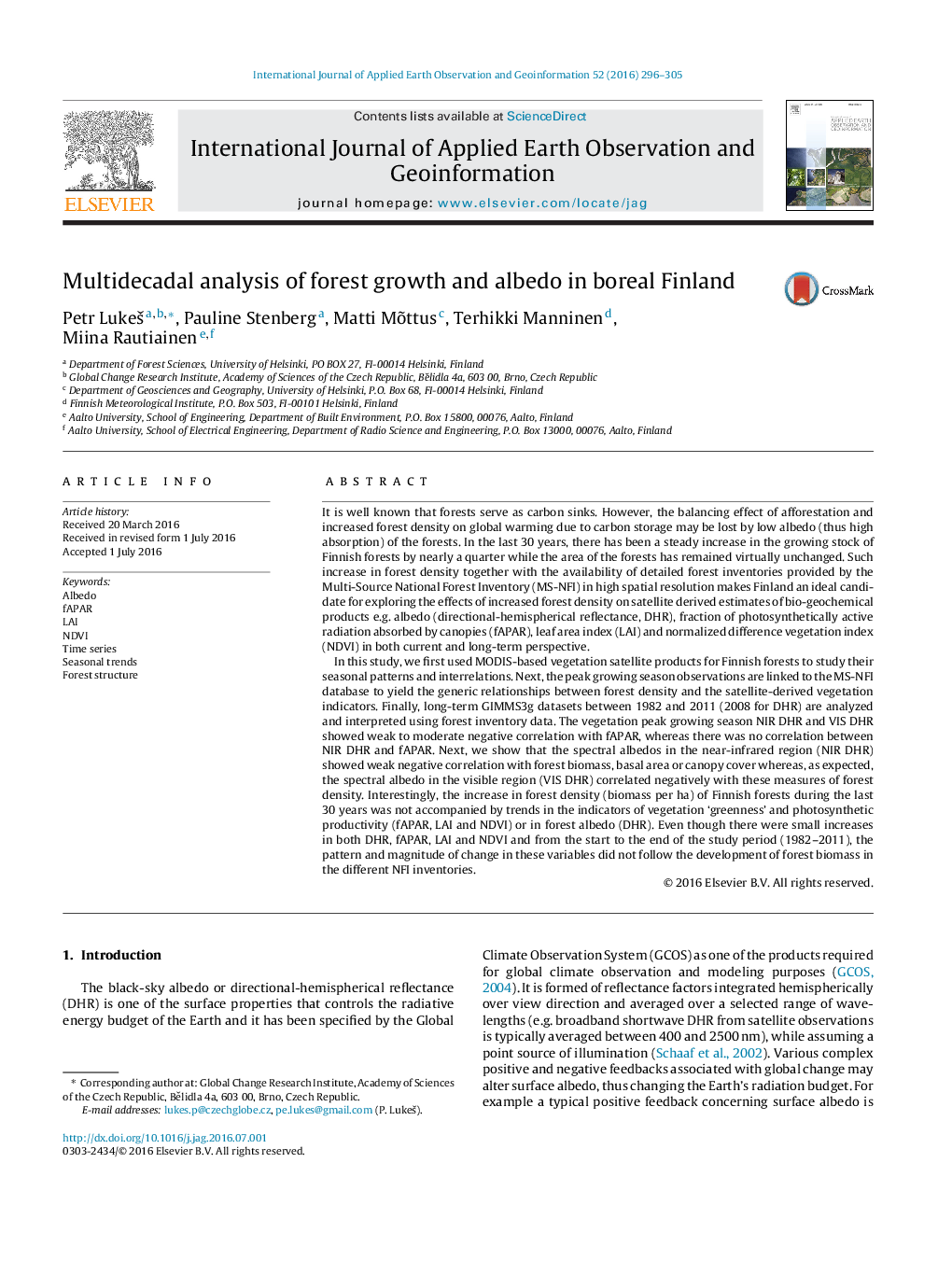| Article ID | Journal | Published Year | Pages | File Type |
|---|---|---|---|---|
| 6348490 | International Journal of Applied Earth Observation and Geoinformation | 2016 | 10 Pages |
Abstract
In this study, we first used MODIS-based vegetation satellite products for Finnish forests to study their seasonal patterns and interrelations. Next, the peak growing season observations are linked to the MS-NFI database to yield the generic relationships between forest density and the satellite-derived vegetation indicators. Finally, long-term GIMMS3g datasets between 1982 and 2011 (2008 for DHR) are analyzed and interpreted using forest inventory data. The vegetation peak growing season NIR DHR and VIS DHR showed weak to moderate negative correlation with fAPAR, whereas there was no correlation between NIR DHR and fAPAR. Next, we show that the spectral albedos in the near-infrared region (NIR DHR) showed weak negative correlation with forest biomass, basal area or canopy cover whereas, as expected, the spectral albedo in the visible region (VIS DHR) correlated negatively with these measures of forest density. Interestingly, the increase in forest density (biomass per ha) of Finnish forests during the last 30 years was not accompanied by trends in the indicators of vegetation 'greenness' and photosynthetic productivity (fAPAR, LAI and NDVI) or in forest albedo (DHR). Even though there were small increases in both DHR, fAPAR, LAI and NDVI and from the start to the end of the study period (1982-2011), the pattern and magnitude of change in these variables did not follow the development of forest biomass in the different NFI inventories.
Related Topics
Physical Sciences and Engineering
Earth and Planetary Sciences
Computers in Earth Sciences
Authors
Petr Lukeš, Pauline Stenberg, Matti Mõttus, Terhikki Manninen, Miina Rautiainen,
